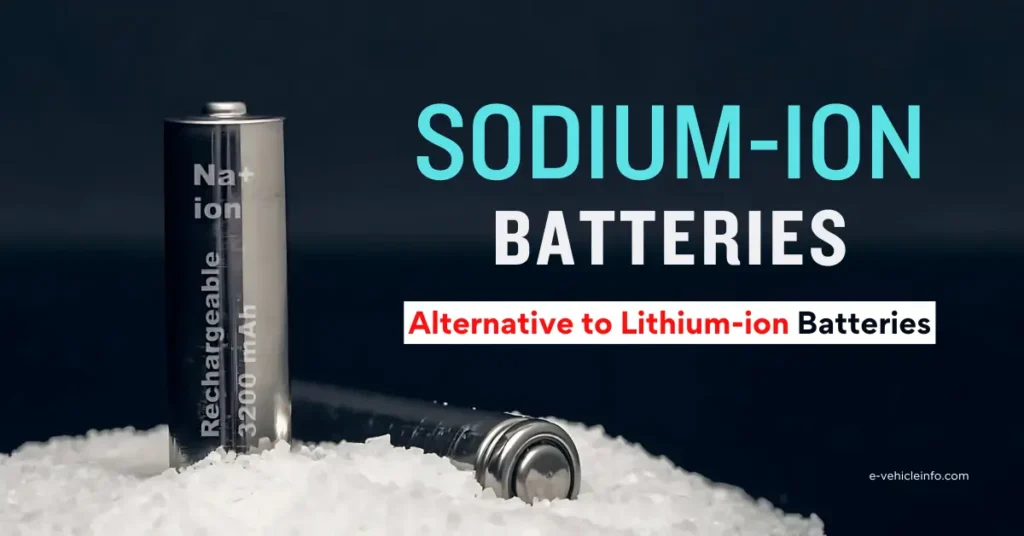
Batteries have become an integral part of our daily lives, powering everything from our smartphones to electric vehicles. Lithium-ion batteries have long dominated the market due to their high energy density and long cycle life.
However, the demand for energy storage solutions that are more sustainable, affordable, and abundant has led to the exploration of alternative battery technologies. Sodium-ion batteries have emerged as a promising candidate to address these challenges.
Sodium-ion batteries (SIBs) represent a compelling alternative to the well-established lithium-ion batteries (LIBs).
They are part of a broader effort to diversify the battery landscape, offering unique advantages and addressing some of the limitations associated with traditional lithium-ion technology.
Sodium-ion batteries use sodium ions (Na+) as the charge carriers instead of lithium ions (Li+), which are used in lithium-ion batteries.
The basic principle of operation is similar, involving the movement of ions between a positive cathode and a negative anode.
A “sodium-ion battery” is not a specific chemical compound or formula like a traditional chemical substance.
Instead, it refers to a type of battery technology that uses sodium ions (Na+) as charge carriers.
These sodium ions move between the positive and negative
Electrodes within the battery during charging and discharging cycles.
Cathode: The cathode is the positive electrode, and it typically contains a compound that can accept sodium ions during charging and release them during discharging.
Common cathode materials in sodium-ion batteries include sodium cobalt oxide (NaCoO2), sodium iron phosphate (NaFePO4), and other sodium-based compounds.
Anode: The anode is the negative electrode, and it typically contains a material capable of storing or intercalating sodium ions during charging and releasing them during discharging.
Common anode materials in sodium-ion batteries include hard carbon (graphite-like materials) and other sodium-intercalation compounds.
Electrolyte: The electrolyte is the conductive medium that allows the movement of sodium ions between the cathode and anode. It’s typically a sodium salt dissolved in a solvent.
Separator: A separator is a porous membrane that physically separates the cathode and anode to prevent short circuits while allowing the flow of sodium ions.
The chemical reactions involved in a sodium-ion battery are complex and involve the movement of sodium ions between the cathode and anode, as well as redox reactions within the electrode materials.
Some of the potential advantages of sodium-ion batteries over lithium-ion batteries:
CATL is a prominent Chinese battery manufacturer known for its lithium-ion batteries. They have been investing in research and development of sodium-ion batteries as an alternative to lithium-ion technology.
Toshiba has been a pioneer in the development of sodium-ion batteries. They have announced research efforts to advance sodium-ion battery technology.
Faradion, a UK-based company, has been working on sodium-ion batteries and has received funding for research and development projects. As per some reports well known Indian Group Reliance Industries has paid 135 Million dollars to purchase Faradion.
Sakura Battery, a Japanese company, has also been involved in sodium-ion battery research and development.
Ionic Materials, a U.S.-based company, has been researching and developing solid-state electrolyte materials for various types of batteries, including sodium-ion batteries.
Ilika, a UK-based materials company, has been working on advanced materials for energy storage applications, including sodium-ion batteries.
Read More: Top 7 Sodium-ion Battery Manufacturers in India & Global
| Aspect | Sodium-Ion Batteries | Lithium-Ion Batteries |
| Abundance of Raw Materials | Sodium is more abundant. | Lithium is less abundant. |
| Cost | Generally expected to be cheaper due to abundant sodium. | Materials like cobalt can make lithium-ion batteries more expensive. |
| Energy Density | Typically lower energy density, can affect the driving range in electric vehicles. | Higher energy density, allowing for longer driving ranges in EVs. |
| Cycle Life | Historically, sodium-ion batteries had lower cycle life, but improvements are being made. | Lithium-ion batteries typically have a good cycle life. |
| Safety | Considered safer due to the lower reactivity of sodium compared to lithium. Reduced risk of thermal runaway. | Generally safe but can be prone to thermal runaway if damaged or abused. |
| Environmental Impact | Potentially lower environmental impact due to sodium’s abundance and fewer supply chain concerns. | Concerns about the environmental impact of lithium mining and extraction. |
| Charging Speed | Charging and discharging rates can vary depending on materials but may be slower than lithium-ion batteries. | Lithium-ion batteries often have faster charging capabilities. |
| Applications | Potential for large-scale energy storage, grid applications, and electric vehicles. | Widely used in electric vehicles, portable electronics, and energy storage systems. |
| Research and Development | Active research to improve performance, energy density, and cycle life. | Ongoing research to enhance performance and safety. |
India’s electric SUV market is getting more exciting than ever. On one side, we have Mahindra — a trusted…
Ultraviolette Automotive has once again raised the benchmark in the electric two-wheeler segment with the introduction of Ballistic+, a high-performance…
Gagan Choudhary, one of India's trusted automotive content creators with over 1.89 million YouTube subscribers, recently shared his in-depth experience…
ZELIO E Mobility, one of India’s rapidly rising electric two-wheeler manufacturers, has launched the facelifted version of its popular low-speed…
Ultraviolette Unveils F77 Ballistic Plus: India’s First AI-Powered Motorcycle Upgrade With Zero Hardware Change. Bengaluru-based electric performance motorcycle manufacturer Ultraviolette…
Renault has been spotted with a new test mule believed to be the 2026 Renault Kwid EV, giving fresh impetus…
This website uses cookies.